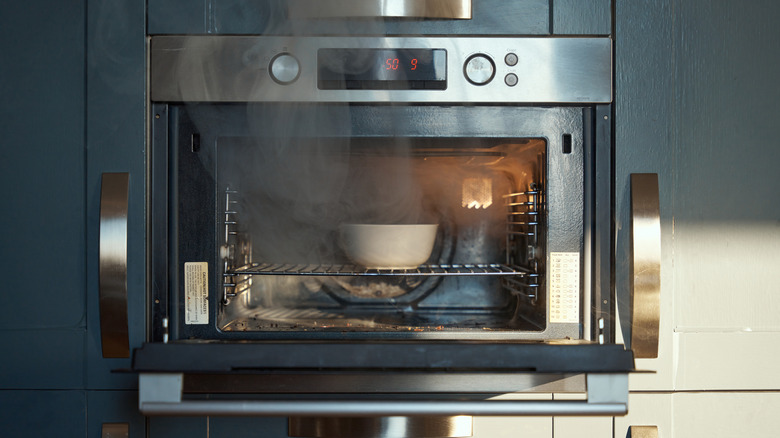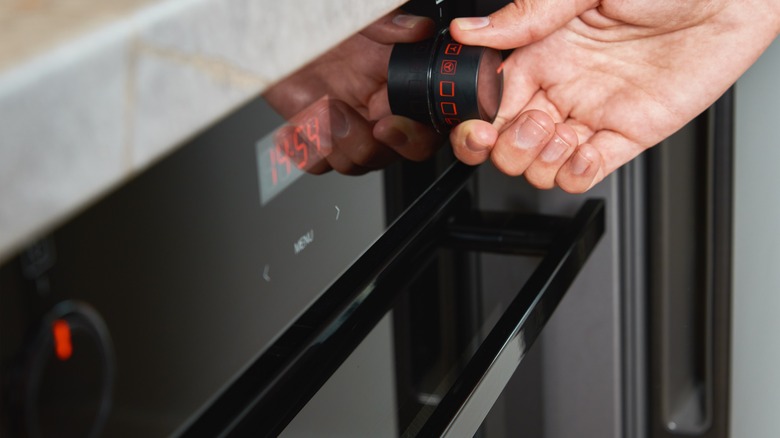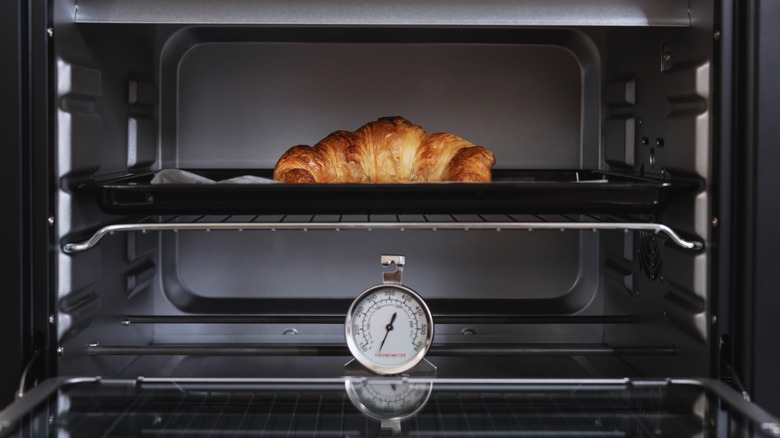Your Oven Temperature Is Not As Accurate As You'd Think
Have you ever meticulously followed a recipe only to end up with a disappointing dish? Whether it's a holiday turkey that stubbornly refuses to cook or a batch of cookies that burns before the timer dings, the issue might not be your culinary skills. The real culprit could be your oven. Surprisingly, the ambient temperature in this trusty appliance doesn't always match its settings. According to the experts at Thermoworks, oven temperatures can deviate by a startling 25 to 50 degrees Fahrenheit.
If this doesn't seem like a big deal, imagine baking a cake. You set the oven to 350 degrees, but unbeknownst to you, it's lagging behind at 300. Not only will your cake take longer to bake, but it may not have the coveted rise or golden brown exterior you expected. On the flip side, if your oven's running hotter than it should, you might end up with something more like charcoal than cake. Attaining the perfect bake requires an oven that's not too hot, not too cold, but just right. You're like Goldilocks — with oven mitts on.
Why are oven temperatures so inaccurate?
The fickle nature of your oven's temperature regulation can be traced back to the appliance's design. As CNET explains, your oven isn't designed to hit and hold a particular temperature; Its main function is to regulate the heat to maintain an average temperature throughout cooking. In other words, your oven's thermostat isn't like a train locked onto tracks, steadily pushing towards its temperature destination. It's more like a pendulum, swinging back and forth around your desired setting. Too cold? The heat kicks on. Too hot? The heat gets cut. This oscillation can result in frustrating peaks and valleys in your cooking temperature.
To make matters worse, most ovens have a temperature sensor nestled in their back corner. This placement can paint an inaccurate picture of the entire oven's temperature. Over time, the thermostat mechanism and other internal parts of your oven may become overworked, leading to greater inaccuracies in temperature readings.
Nailing the perfect oven temperature
Whether you're noticing inconsistent oven results or you're just curious, grab an oven thermometer and run a test. Whether you use a high-end smart probe or a traditional oven thermometer, position it in the center of your oven's middle rack. Heat the oven to 350 degrees Fahrenheit, and check the temperature after 20 minutes. This test will reveal if your oven is running hot, cold, or in the Goldilocks zone. Incorporate this check into your routine home maintenance every three months, alongside tasks such as cleaning your oven and checking your fridge's temperature.
To get to know your oven even better, you can try a tasty experiment to detect hot spots. Arrange your oven racks evenly, and place six slices of bread on each. Heat the oven to 350 degrees, checking the bread at 10, 15, and 20-minute intervals. Once toasted to your preference, remove and observe their layout. Variations in toastiness indicate potential hot spots in those areas of your oven.
Luckily, a wonky oven temperature sensor is fixable. You can either call a professional or attempt a DIY fix, though caution is advised if you choose the latter. Most importantly, you can ensure your oven is running like it should by remembering to always preheat properly and resist the temptation to peek inside too often.


